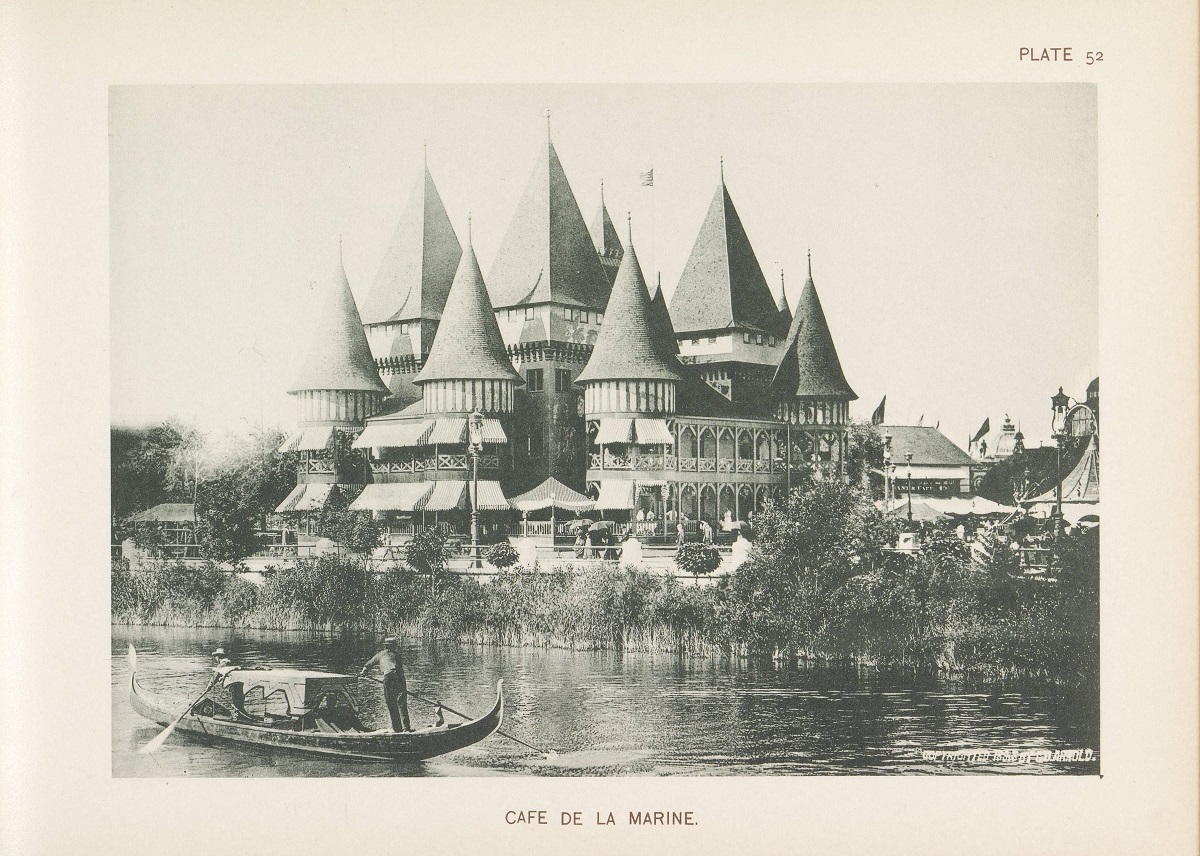
A photograph by Charles Dudley Arnold of the lovely Café de la Marine (Marine Café) designed by architect Henry Ives Cobb. [Image from Arnold, C. D.; Higinbotham, H. D. Official Views of the World’s Columbian Exposition. Press Chicago Photo-gravure Co., 1893.]
The Chicago Tribune reported (“Food Enough for All” October 10, 1893, p. 9) that an estimated 300,000 visitors ate their midday meal inside the fairgrounds on Chicago Day. This posed a logistics challenge of colossal proportions. The Wellington Catering Company, which ran the many of the restaurant concessions, had 2,000 employees on duty continuously from early morning until late at night that day.
“The one concession that fed more people than all others combined was the Wellington Catering company. It had laid in a stock of bread, meat, milk, coffee, pie, cakes, and other eatables sufficient to allay the wants of 300,000 persons. And before midnight that enormous stock had been reduced to an exceedingly small minimum. This company had eight restaurants and forty lunch counters in operation. It commenced business in the morning with 40,000 pounds of meat, 12,000 loaves of bread, 200,000 ham sandwiches, 400,000 cups of coffee, 15,000 gallons of cream, and pies and cakes by the wagon-load. It also had two carloads of potatoes and 4,000 half barrels and 3,600 dozen bottles of beer. It was prepared to serve 22,000 people at one time. This number was duplicated as often and as rapidly as they could be waited on, eat, and get out.”
How did it go? According to the Tribune “it was probably the first time, in the history of this country that such a multitude of people was accommodated in the matter of food with less annoyance and disappointment.”
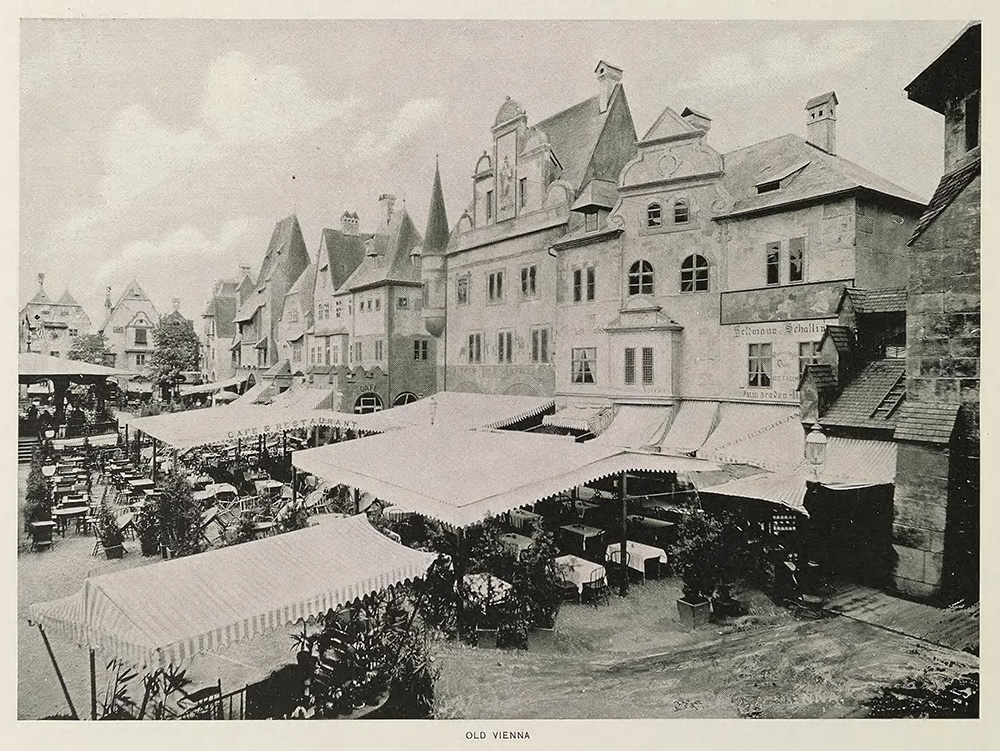
The Old Vienna café and courtyard. [Image from Bancroft, Hubert Howe The Book of the Fair. The Bancroft Company, 1893.]


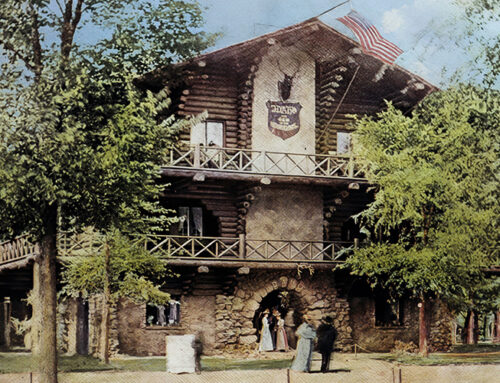
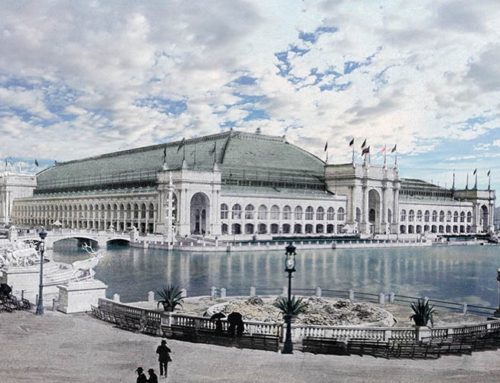
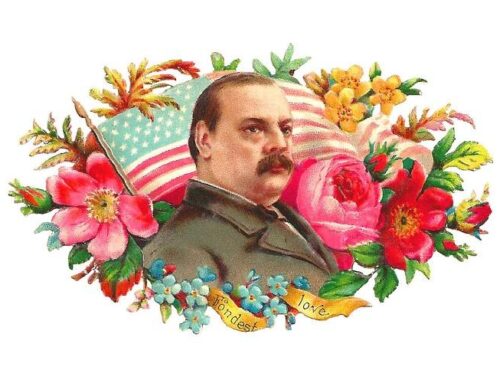

Leave A Comment